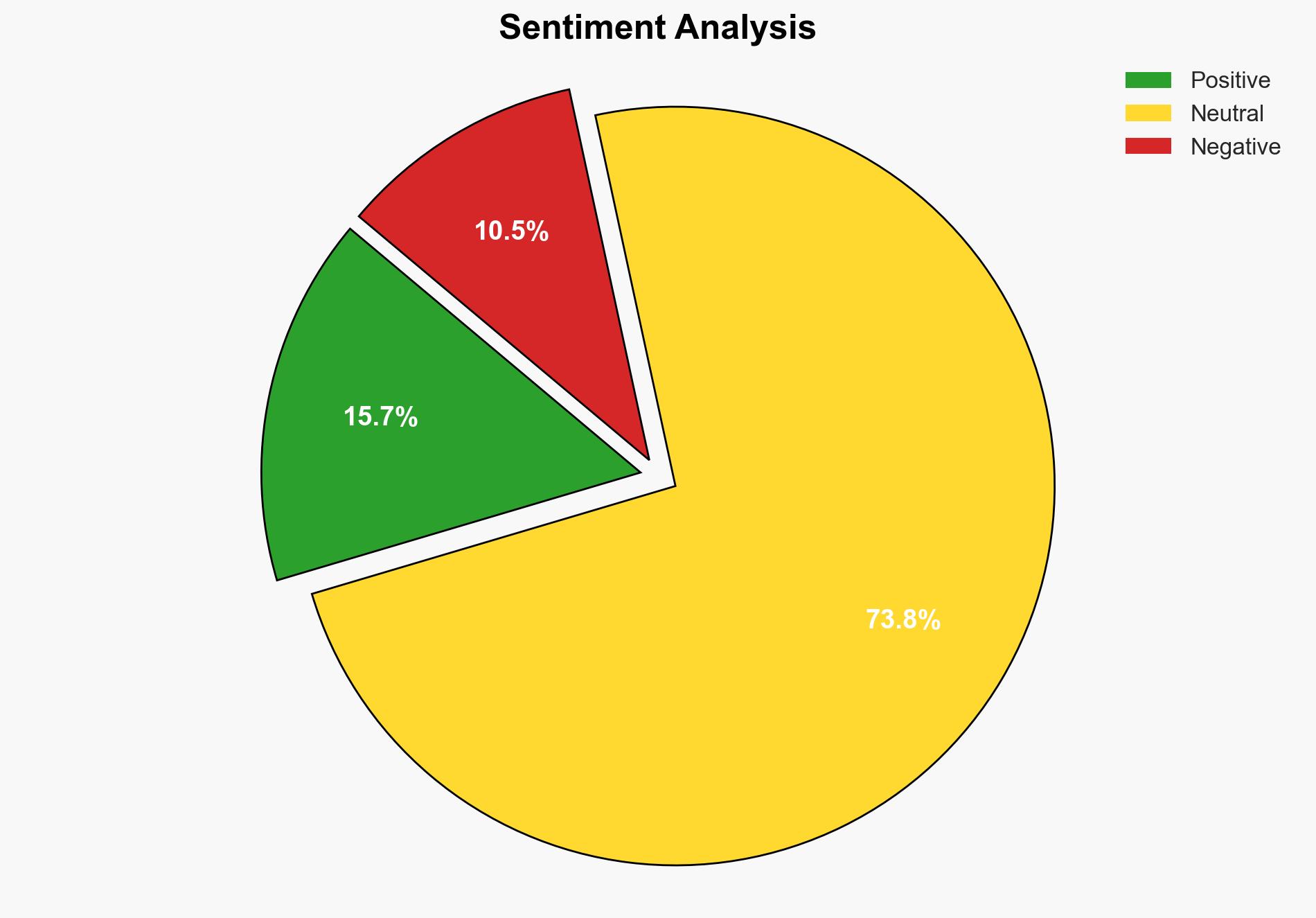Legit Security Adds Dashboard to ASPM Platform to Improve DevSecOps – DevOps.com
Published on: 2025-03-29
Intelligence Report: Legit Security Adds Dashboard to ASPM Platform to Improve DevSecOps – DevOps.com
1. BLUF (Bottom Line Up Front)
Legit Security has introduced a new dashboard to its Application Security Posture Management (ASPM) platform, enhancing DevSecOps capabilities. This development aims to streamline the correlation of vulnerabilities with specific application development teams, thereby improving risk prevention and remediation efforts. The dashboard’s integration is expected to significantly enhance the identification and management of security vulnerabilities in the software development lifecycle.
2. Detailed Analysis
The following structured analytic techniques have been applied for this analysis:
General Analysis
The new dashboard by Legit Security is designed to improve the efficiency of identifying and managing security vulnerabilities. By integrating static application security testing (SAST) tools, it provides insights into the DevSecOps pipeline, creating opportunities for training and gamification. The platform’s use of large language models (LLMs) and heuristics enhances its ability to detect vulnerabilities, including exposed access keys and personally identifiable information (PII). This capability is critical as the volume of code generated by AI platforms increases, often containing vulnerabilities due to flawed training data.
3. Implications and Strategic Risks
The introduction of this dashboard has several implications:
- Improved security posture for organizations adopting the ASPM platform, potentially reducing the risk of cyberattacks.
- Increased pressure on developers to adhere to security best practices, as vulnerabilities are more easily tracked and attributed.
- Potential regulatory implications as organizations may need to demonstrate compliance with security standards.
The strategic risks include the possibility of increased cybercriminal activity targeting vulnerabilities identified by AI, as well as the challenge of ensuring that AI-generated code is secure.
4. Recommendations and Outlook
Recommendations:
- Organizations should invest in training developers to write secure code and utilize the dashboard’s insights for continuous improvement.
- Regulatory bodies should consider updating guidelines to incorporate AI-driven security tools and practices.
- Technological investments in AI and machine learning should focus on improving the accuracy and reliability of vulnerability detection.
Outlook:
Best-case scenario: Widespread adoption of the dashboard leads to a significant reduction in software vulnerabilities and improved security postures across industries.
Worst-case scenario: Cybercriminals exploit AI-identified vulnerabilities faster than they can be remediated, leading to increased security breaches.
Most likely outcome: Gradual improvement in security practices as organizations integrate the dashboard into their DevSecOps processes, with ongoing challenges in keeping pace with AI-generated vulnerabilities.
5. Key Individuals and Entities
The report mentions Liav Caspi as a significant individual involved in the development and implementation of the ASPM platform enhancements.





